The future of #eventprofs chats
Thank you everyone who participated in last week’s two #eventprofs chats about …the future of #eventprofs chats. Here are links to the survey results and the Tuesday transcript. I’ve had a chance to think about the discussion, and, as the de facto #eventprofs community manager (other drivers welcome), here’s what I plan to do in the future:
Organize one chat per week
Although we have had two weekly time slots for #eventprofs chats for some time (Tue 9-10pm and Thu 12-1pm EST), in practice we have been averaging just over one chat per week (58 in 2011). There was clear agreement that we should change how often we meet to once a week. I’m still open to anyone suggesting an additional short-notice chat on a hot topic, but I won’t be scheduling more than one chat a week.
Rotate the day and time we hold the chat
It was clear from the discussions that about half those who responded preferred daytime chats and half preferred evening chats. Rather than disenfranchise half our audience permanently, we’re going to rotate our chat times weekly between our existing Tue 9-10pm and Thu 12-1pm EST times. I’m not going to to be a robot about this; we may chat two Tuesdays or Thursdays in a row. But over the year, we’ll hold about the same number of chats on each day. Follow @epchat to be informed about upcoming chats.
Chat hashtag
We will keep using the #eventprofs hashtag for the chat. Yes, it contains a lot more, sometimes irritating, announcements (aka spam) than the good old days, but that’s the price of fame. The same would eventually happen for any new hashtag we adopted. Event professionals new to Twitter often discover our chats via the #eventprofs hashtag. Besides, do you really want to have to remember to check one more hashtag?
Chat topics
We have had a neat tool for suggesting and voting on #eventprofs chat topics for some time, but it has not been used much, though I publicize it regularly on Twitter. I did not receive any ideas on ways to increase suggestions for chat topics, though several new topics were suggested (thank you Michelle & Marvin!) which I’ve added to our tool. People liked the idea of having more guest speakers on the chat and I will try to solicit more of them. And I would really appreciate suggestions/introductions from the #eventprofs community (that means YOU); contact me, it only takes a moment!
OK, so how can I help?
- Follow @epchat to be informed about upcoming chats.
- Take just a couple of minutes to suggest and vote on #eventprofs chat topics. If there’s a topic you want to talk about, suggest it! Is there’s a guest you want? Suggest them, together with the topic! If everyone added at least one topic just once a year and did comparison voting on five pairs of suggestions, we’d have a great pool of suggestions.
- If you are interested in moderating or being a guest on an #eventprofs chat, just let me know! Include your name, suggested topic, and the day you’d like to be on.
- I would love to move our #eventprofs site from the creaky (but free) pbworks wiki to something more streamlined (a free WordPress site would probably work). But I don’t have the time to do this myself right now. If you would be prepared to help with this project, I promise to have your likeness, links, and a generous profusion of thanks prominently displayed on the resulting gloriously updated version. Contact me!
In the end, as always, the health of the #eventprofs community is up to you. My continuing goal is to support making the #eventprofs chats maximally useful to the greatest number of event professionals, within the constraints of volunteer time and energy. Comments and helpful suggestions are, as always, welcome.

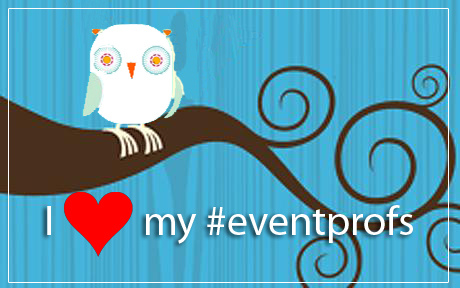
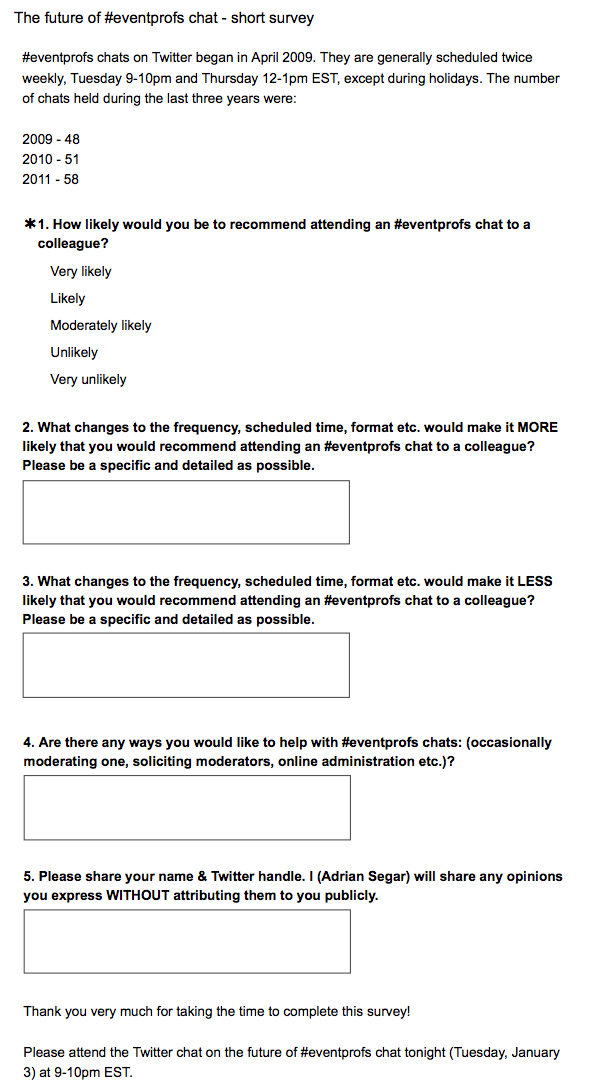
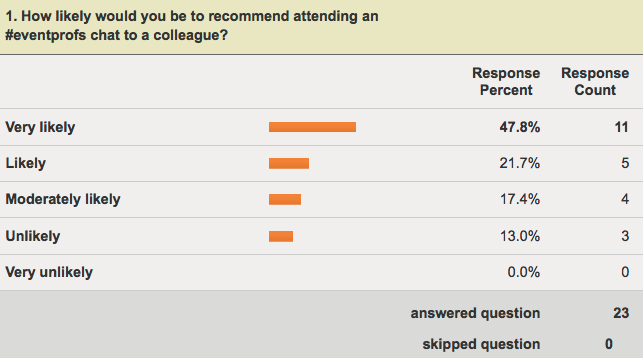
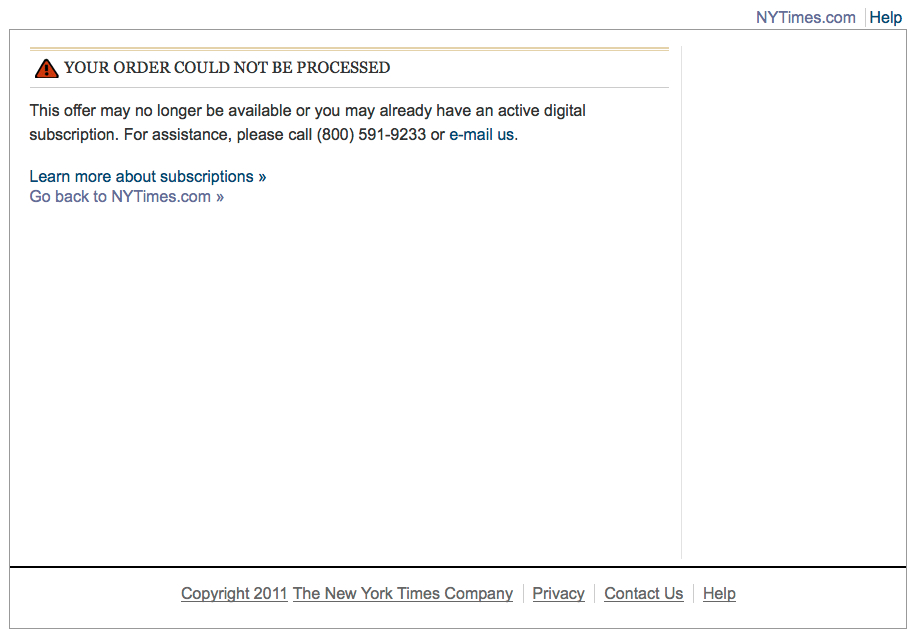
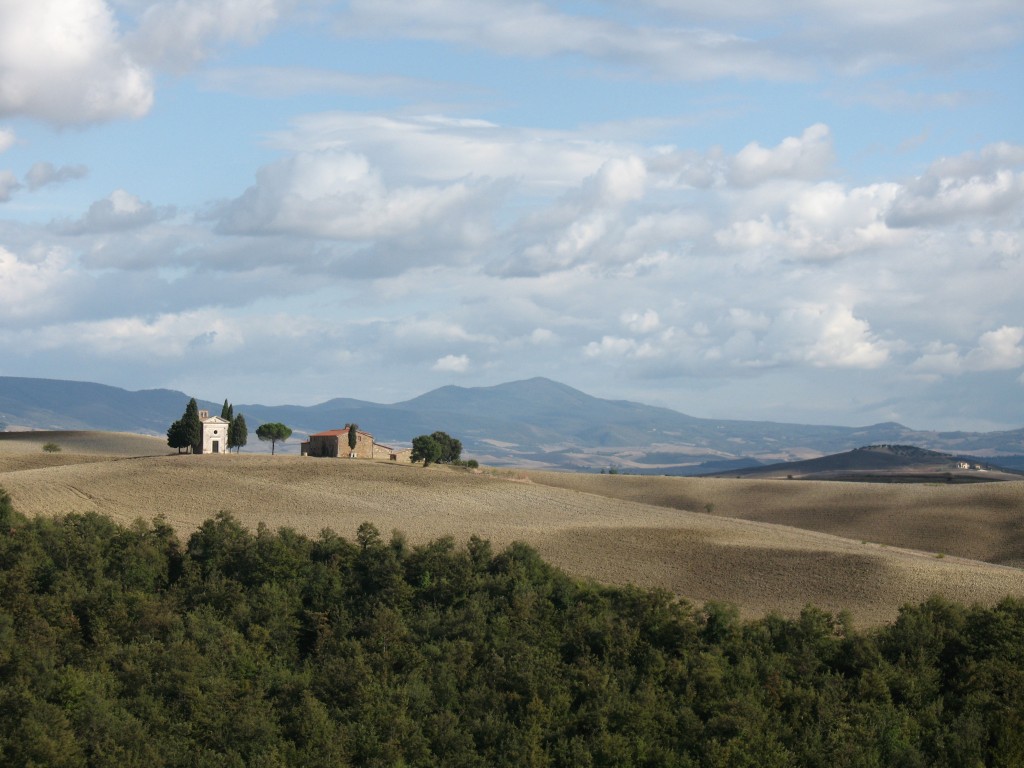 I’ve returned from a long-planned European vacation with my wife Celia, spending two weeks in Italy and one in England. Here are some event design musings triggered by living, albeit briefly, in different cultures from my own.
I’ve returned from a long-planned European vacation with my wife Celia, spending two weeks in Italy and one in England. Here are some event design musings triggered by living, albeit briefly, in different cultures from my own. The only way to travel several thousand miles in a day. And a quick way to get from London to Italy, our first destination, so we could begin the vacation promptly.
The only way to travel several thousand miles in a day. And a quick way to get from London to Italy, our first destination, so we could begin the vacation promptly.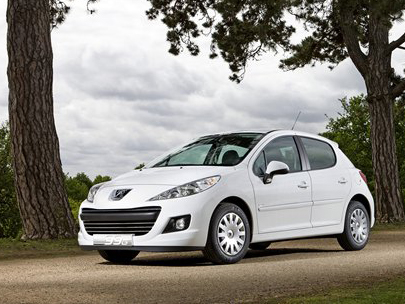 To explore the remote delightful hill towns of
To explore the remote delightful hill towns of 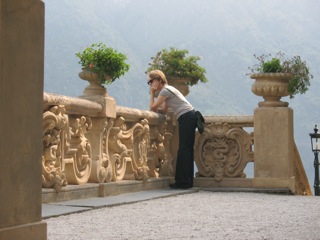 Part of the charm of tiny Tuscan towns is that cars are more or less banned from their ancient hearts. Celia & I walked everywhere we could, up and down steep steps impassable by any other means, through narrow passageways, into tiny churches, and we spent considerable time sitting in cafes watching the world go by. Sadly, we can’t walk as far as we used to. But when possible, personal locomotion is the most flexible and intimate form of traveling.
Part of the charm of tiny Tuscan towns is that cars are more or less banned from their ancient hearts. Celia & I walked everywhere we could, up and down steep steps impassable by any other means, through narrow passageways, into tiny churches, and we spent considerable time sitting in cafes watching the world go by. Sadly, we can’t walk as far as we used to. But when possible, personal locomotion is the most flexible and intimate form of traveling. We arrived at our hotel on the shore of
We arrived at our hotel on the shore of 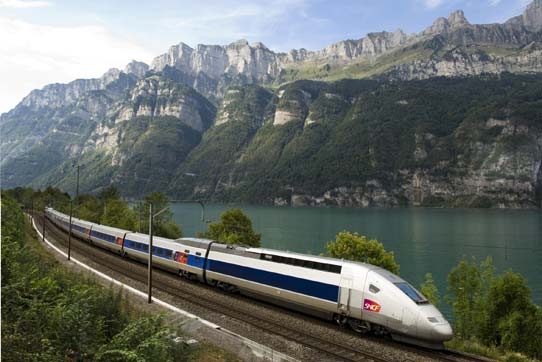 Rather than flying back to London, we decided to take trains, stopping in Zurich overnight, as our goal was to travel by land over the Alps. Driving would have taken too long and been too tiring; the high-speed European trains satisfied our desire. Once in London, we traveled extensively. We used overground trains for two-day trips outside the capital and the Tube inside London. The overground trains took us efficiently to our destinations while providing satisfying vistas of the English countryside. The Tube got us where we needed to go faster than any other transportation.
Rather than flying back to London, we decided to take trains, stopping in Zurich overnight, as our goal was to travel by land over the Alps. Driving would have taken too long and been too tiring; the high-speed European trains satisfied our desire. Once in London, we traveled extensively. We used overground trains for two-day trips outside the capital and the Tube inside London. The overground trains took us efficiently to our destinations while providing satisfying vistas of the English countryside. The Tube got us where we needed to go faster than any other transportation.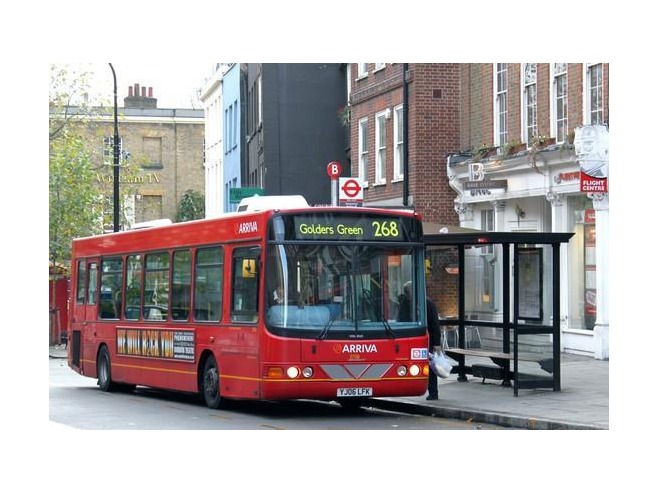 And when we were in less of a hurry in London, we took buses, allowing us to re-familiarize ourselves with the city we once lived in for many years.
And when we were in less of a hurry in London, we took buses, allowing us to re-familiarize ourselves with the city we once lived in for many years.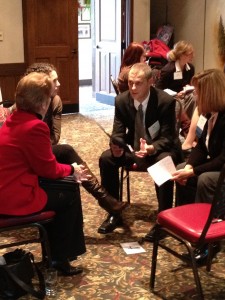 The peer conferences I run are extremely effective at catalyzing change, both in the people who participate in them and the organizations that run them. Why is this?
The peer conferences I run are extremely effective at catalyzing change, both in the people who participate in them and the organizations that run them. Why is this?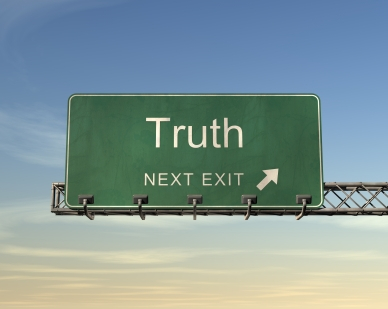 Here’s a simple challenge to anyone who organizes an event and asks for evaluations.
Here’s a simple challenge to anyone who organizes an event and asks for evaluations.
 Traci Browne: A journey inside the mind of a conference producer.
Traci Browne: A journey inside the mind of a conference producer. Paul Cook
Paul Cook Jenise Fryatt: Build connections, gain business and personally grow by using the EIR social media strategy.
Jenise Fryatt: Build connections, gain business and personally grow by using the EIR social media strategy. Andrea Sullivan
Andrea Sullivan